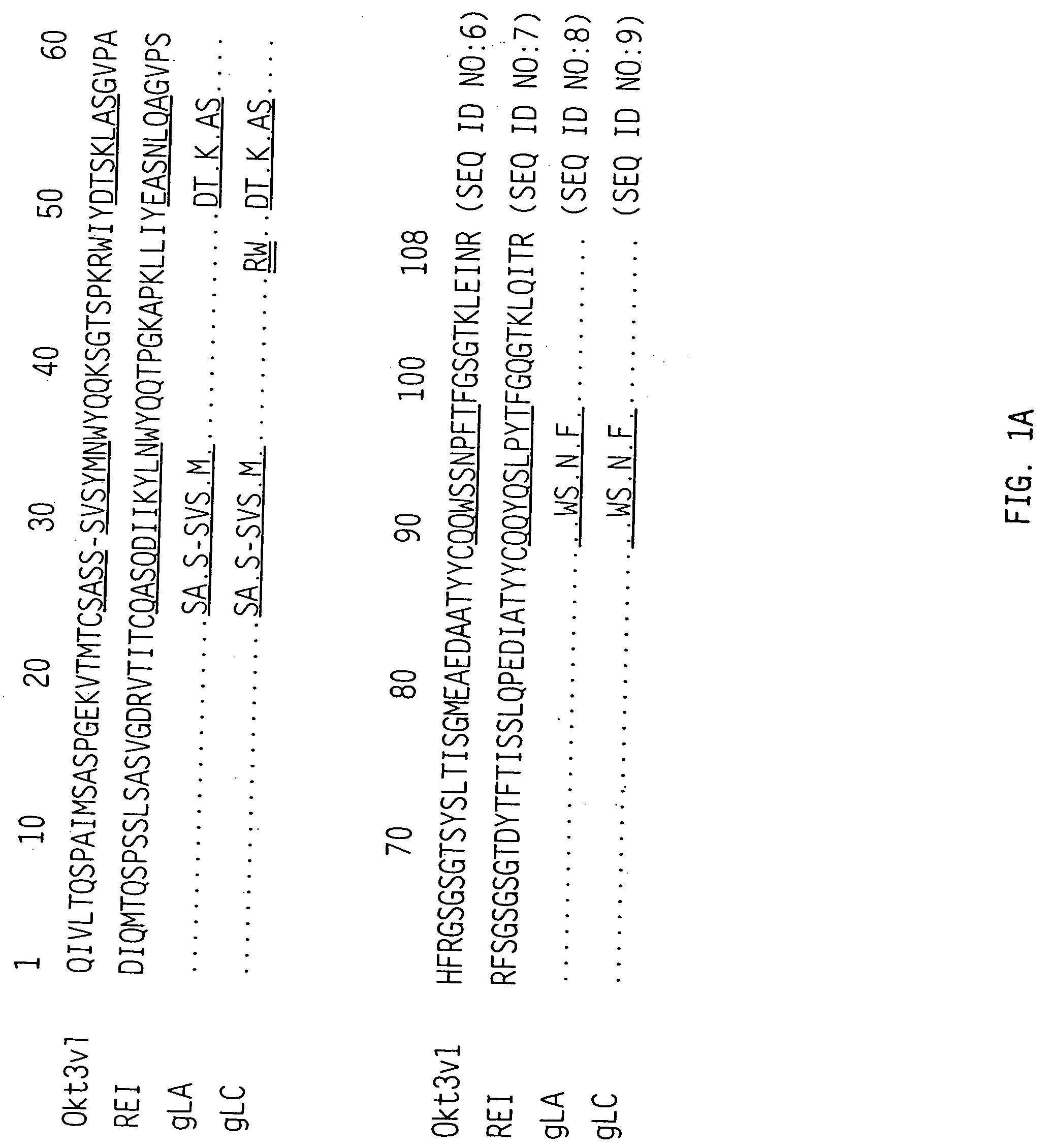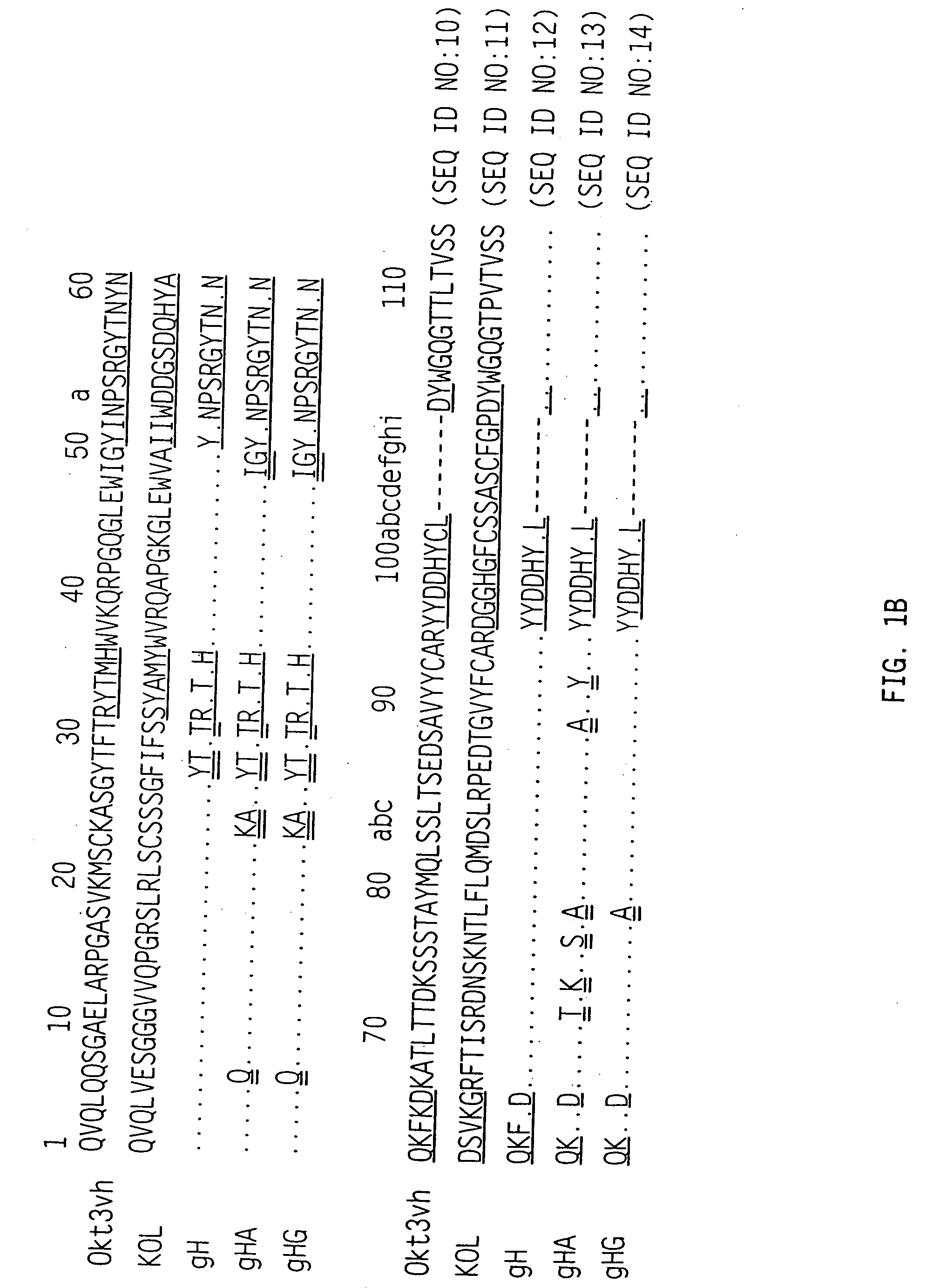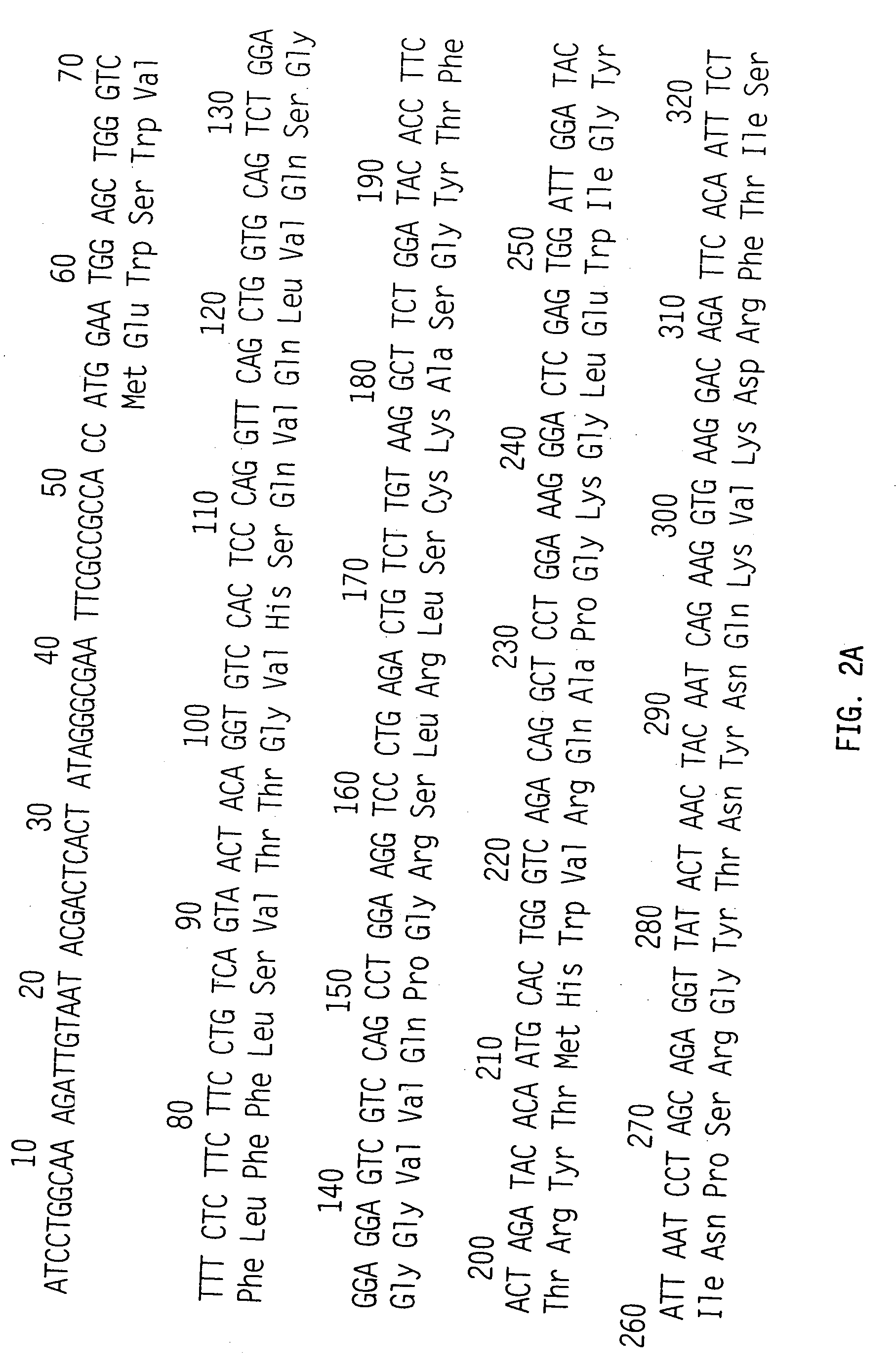Methods and materials for modulation of the immunosuppressive activity and toxicity of monoclonal antibodies
- Summary
- Abstract
- Description
- Claims
- Application Information
AI Technical Summary
Benefits of technology
Problems solved by technology
Method used
Image
Examples
example 1
Mutation in the Fc Portion of the Human-OKT3 mAb
[0115] Mutations of the phenylalanine in position 234 into a leucine to increase the affinity of the binding of the mAb to FcR I (Leu-234), or of the contiguous leucine (235) into a glutamic acid to reduce FcR binding (Glu-235) were performed as follows: ultracompetent CJ 236 E Coli (Invitrogen, San Diego, Calif.) were transformed with pSG5 containing the heavy chain gene of the gOKT3 mAb. The bacteria were allowed to grow in LB broth supplemented with uridine (25 mg / ml), ampicillin (100 μg / ml) until reaching an optical density of 0.35 at a wave length of 600 nm. The CJ 236 E. coli were infected with helper phage M-13 (pfu) (Stratagene) to generate uridine incorporated single stranded template. An oligonucleotide synthesized with thymidine and containing the desired mutation was then annealed to the uridine-single-stranded template to serve as a primer for the replication of the plasmid after the addition of deoxynucleotides, T7 polym...
example 2
Generation and Identification of OKT3 Variable Region Sequences
[0116] OKT3 variable region sequences were derived from oligo-dT primed cDNA from OKT3 hybridoma cells using the Amersham International Plc. cDNA synthesis kit. The cDNA was cloned in pSP64 using EcoRI linkers. E. coli clones containing light and heavy chain cDNAs were identified by oligonucleotide screening of bacterial colonies using the oligonucleotides: 5′-TCCAGATGTTAACTGCTCAC-3′(SEQ ID NO:15) for the light chain, which is complementary to a sequence in the mouse K constant region, and 5′-CAGGGGCCAGTGGATGGATAGAC-3′(SEQ ID NO:16) for the heavy chain, which is complementary to a sequence in the mouse IgG2a constant CH1 domain region.
[0117] The amino acid sequences for the variable regions deduced from the sequences of the cDNAs are shown in FIG. 1A (row 1) for the light chain and FIG. 1B (row 1) for the heavy chain. The CDR's are shown with the single underlining. The light chain is a member of the mouse VL subgroup ...
example 3
Design and Construction of Humanized OKT3 Genes
[0118] The variable region domains for the humanized antibodies were designed with mouse variable region optimal codon usage (Grantham, 1986) and used the signal sequences of the light and heavy chains of mAb B72.3 (Whittle, 1987). Immediately 5′ to the initiator ATG a 9-bp Kozak sequence (Kozak, 1987), 5′-GCCGCCACC-3′ (SEQ ID NO:17), was inserted. 5′ and 3′ terminal restriction sites were added so that the variable regions could be attached directly to the DNA sequences for the human IgG4 and κ constant regions prior to cloning into the eukaryotic expression vectors.
[0119] The variable regions were built either by simultaneously replacing all of the CDR and loop regions by oligonucleotide directed, site-specific mutagenesis (Ollo, 1983) of a previously constructed humanized variable region for B72.3 cloned in M13 (Emtage et al.), or by assembling the sequence using synthetic oligonucleotides ranging in size from 27-67 base pairs and ...
PUM
 Login to View More
Login to View More Abstract
Description
Claims
Application Information
 Login to View More
Login to View More - R&D
- Intellectual Property
- Life Sciences
- Materials
- Tech Scout
- Unparalleled Data Quality
- Higher Quality Content
- 60% Fewer Hallucinations
Browse by: Latest US Patents, China's latest patents, Technical Efficacy Thesaurus, Application Domain, Technology Topic, Popular Technical Reports.
© 2025 PatSnap. All rights reserved.Legal|Privacy policy|Modern Slavery Act Transparency Statement|Sitemap|About US| Contact US: help@patsnap.com



